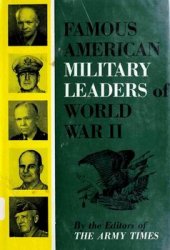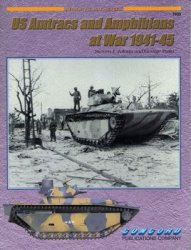Maj. A. M. Miller establishes this pioneering concern in Bulawayo in early 1922 to provide nonscheduled air transport of people and goods. Rhodesia’s first commercial air concern, RAT begins services in May with an Avro 504K, christened Matabele, and flown by Miller.
The Matabele rejects takeoff from Rusape on August 13 and is badly damaged. Miller elects not to repair the aircraft, liquidating the company instead. The pilot now migrates to South Africa, where he will play a role in the formation of Union Airways (Pty.), Ltd.
RHODESIAN AND NYASALAND AIRWAYS, LTD. (RANA): Rhodesia/Nyasaland (1933-1940). RANA is formed at Bulawayo on October 12, 1933 by the merger of the small competitors Rhodesian Aviation Company, Ltd. (RAC) and Christowitz Air Services, Ltd.
Rhodesia Railways General Manager H. Chapman, former chairman of RAC, is named RANA chairman. Other board members include Col. T. Ellis Robins (later Lord Robins), general manager of the British South Africa Company, and Garth Trace, Southern Africa regional manager for Imperial Airways, Ltd. Capitalization of ?25,000 is provided by the trustees of the Beit Railway and also by Imperial Airways, Ltd.
Shareholding is divided between Beit (13,000), Imperial (8,000), and Rhodesian Aviation Company’s former executives (2,477).
The former RAC Salisbury to Johannesburg route via Gatooma, Que Que, Gwelo, and Bulawayo, continues to be flown with four de Havil-land DH 80A Puss Moths.
The weekly Blantyre to Salisbury route flown by Christowitz is assumed on March 8, 1934, and operated with two former Christowitz Puss Moths. Seconded over from Imperial Airways, Ltd., Capt. M. H.
Phillips completes the first RANA roundtrip on March 9. A total of 3,639 letters are carried on the flight from Blantyre to Salisbury (including 626 from South Africa or South West Africa); at Salisbury, they are loaded aboard an Imperial plane that reaches Cape Town on March
10. The first return flight to Blantyre carries 500 letters from South Africa and 131 from London.
In April, a Westland Wessex is leased from Imperial Airways, Ltd. Weekly Blantyre to Ndola Fox Moth, later Wessex, service is initiated on May 5 via Salisbury, Bulawayo, Livingstone, Lusaka, and Broken Hill. Bulawayo is dropped as a stop on the Johannesburg route on May 19.
Company headquarters are transferred to Salisbury during the summer. A DH 85 Leopard Moth is placed in service during October.
A total of 1,925 passengers have been transported by year’s end.
In July 1935, the carrier signs an agreement with the Menica Trading Company of Beira, under which that community will be linked to the Imperial Airways, Ltd. African route. RANA, on August 1, launches two thrice-weekly services to Beira from Salisbury and the other from Blantyre, this latter actually starting on August 5. The inaugural return flights over the new routes are undertaken on August 3 and August 6, respectively.
The Wessex is replaced by a DH 89 in November. Enplanements this year, despite the new routes, decline to 2,319.
The first DH 90 Dragonfly is received in August 1936, but customer bookings for the year decline again, falling to 2,103.
Roundtrip frequencies on the Salisbury to Johannesburg are increased to six times a week on February 1, 1937.
When the Empire Air Mail Programme is introduced in June, RANA is given feeder responsibilities over these routes: Beira-Blantyre, Beira-Bulawayo via Salisbury, and Beira-Blantyre via Salisbury. Twice-weekly Beira-Lusaka flights via Salisbury and Blantyre commence on June 30 followed by weekly Beira-Johannesburg service on July 1 via Salisbury, Bulawayo, and Petersburg; both routes are designed to connect with Imperial Airways, Ltd. flights stopping at Beira.
Capitalization is increased to ?70,000 in October and enplanements for the year climb back up to 2,570.
Capitalization grows again in January 1938, rising by ?30,000; 48,295 ?1 shares are outstanding.
Dragon Rapide service from Salisbury to Johnannesburg is introduced on February 1, 1938 via Gatooma, Que Que, Gwelo, Bulawayo, Petersburg. Twice-weekly Dragonfly flights from Blantyre-Fort Jameson via Lilongwe commence on May 23.
Lusaka-Fort Jameson direct weekly roundtrip service is begun on August 10 and in September, twice-weekly Salisbury-Beira via Umtali return frequencies are undertaken.
In terms of passenger boardings, the year is the kindest yet as 3,448 passengers are carried.
The first DH 84 Dragon is received in January 1939. The fleet now also includes 4 Dragon Rapides, 3 Leopard Moths, and 2 Dragonflys. World War II begins for Rhodesia on September 3.
Passenger bookings reach their zenith this year, rising to 3,579.
On February 1, 1940, the company is purchased by the government of Southern Rhodesia and transformed into an air force communications squadron under the title Southern Rhodesian Air Services. The company is officially liquidated on July 8, 1946.
RHODESIAN AVIATION COMPANY, LTD.: Rhodesia (19291933). Capitalized at ?7,500, RAC is formed at Bulawayo, Southern Rhodesia, on April 17, 1929 under subsidy from the government of Southern Rhodesia and the trustees of Sir Alfred Beit’s Beit Railway and led by Capt. Benjamin Roxburgh-Smith. A six-member board of directors is established with Francois Issels as chairman and Roxburgh-Smith as managing director/chief pilot.
The de Havilland aircraft distributorship is taken over from Rhodesian Aviation Syndicate, Ltd. (RAS). Technical advice is provided by Cobham-Blackburn Air Lines, Ltd., which had earlier concluded arrangements with the RAS and now also agrees to provide aircraft.
When the expected Blackburn Bluebird biplane is late in delivery, RAC acquires an Avro Avian in June. A second Avian arrives at Bulawayo in November as D. S. “Pat” Judson becomes the assistant chief pilot. Regularly scheduled weekly roundtrips are started to Salisbury. Investors are able to cover the year’s ?395 loss.
Alan Cobham travels to company headquarters in January 1930 to discuss future plans with the board. Roxburgh-Smith is notified in early February of the arrival of the crated Bluebird at Cape Town; traveling down to that South African seaport, he supervises its assembly and flies it up to Bulawayo, arriving on February 15.
The year’s most important charter customer is C. J. Christowitz, who is flown from Salisbury to Limbe in Nyasaland. Not only is he the first passenger flown to that point, but he will later start his own pioneering service there.
Imperial Airways, Ltd. assumes all Cobham-Blackburn Air Lines, Ltd. interests in Africa in early 1931. The British state carrier immediately withdraws subsidy, leaving the small airline to flounder. Fortunately, both the Beit Railway and the Rhodesian government continue to provide aid.
Upon his permanent return to England in May, Roxburgh-Smith is succeeded as managing director by Pat Judson. The sale of an unspecified number of shares brings in sufficient funds to purchase two de Hav-illand DHA 80 Puss Moths that are assigned to the weekly Bul-awayo-Salisbury route. While on a training flight with a student pilot, the Puss Moth transporting Managing Director Judson crashes on November 20; both men are killed.
The fleet is grounded for two weeks for safety checks, while Michael Hawkings-Pearce is brought on as the new managing director. A total of 400 passengers are flown on the year.
Sir Alfred Beit establishes the Beit Trust on February 10, 1932, for the improvement of air transport on the Imperial route; he capitalizes it at ?50,000. Airwork, Ltd. executive H. Nigel Norman is asked to come and conduct a survey after which he might advise the Trust on the development of an air network.
A total of 1,229 passengers are flown on the year.
Stockholders of RAC meet in a special called session in January 1933 to consider a buyout proposal from Imperial Airways, Ltd. received late the previous year. The decision is taken not to sell.
A DH 83 Fox Moth is acquired in the late spring of 1933 and is used by Managing Director Hawkings-Pearce to personally start weekly passenger and cargo roundtrips on July 27 from Salisbury to Johannesburg, via Gatooma, Que Que, Gwelo, and Bulawayo.
By summer, Airwork, Ltd. executive Norman has completed his aerial survey and prepared a set of recommendations. Chief among the latter is the establishment of a single state-supported feeder to replace the independents now operating in the region.
As a result of the Norman Report, the board votes on August 4 to turn over assets to a new concern about to be formed with Beit and government backing. On October 12, RAC is merged with rival Christowitz Air Services, Ltd. to form Rhodesian and Nyasaland Airways, Ltd. Prior to its dissolution, RAC has flown 1,250 passengers on the year.
RHODESIAN AVIATION SYNDICATE, LTD.: Southern Rhodesia (1927-1929). One day in the summer of 1927, Capt. J. Douglas “Dug-gie” Mail shows up at Bulawayo from Natal with a crated, war-surplus de Havilland DH 6B. He has come to join with B. M. Cairns, owner of the Motor and Cycle and Supply company, to set up a flying service.
Mail and Cairns meet with prominent local citizens. Receiving local support, as well as the financial backing of Filabusi mine owner Harry L. Stewart, the two men to set up RAS. Other members of the syndicate include A. G. Hay, A. S. Redrup, and barrister John Coghlan.
Having meanwhile assembled his de Havilland, which is christened Baby Tank, Mail begins the company’s operations with a flight from the local racetrack on August 14. The new concern will be contracted to fly a number of charters.
On September 20, the Duc de Nemours hires Mail to transport him to Plumtree, 60 mi. SW of Bulawayo. Insufficiently powered, the plane makes a forced landing while en route, forcing the pilot and his passenger to walk most of the way back to town. The Baby Tank is carted back to Bulawayo, but not repaired.
Director Hay, meanwhile, is in London on business. He is notified of the de Havilland’s demise and asked to acquire another aircraft. Meeting with Sir Geoffrey de Havilland, Hay arranges for RAS to be his first distributor in Southern Africa. A DH Moth is shipped down to Durban, where Capt. Mail uncrates and assembles it, flying it back to Bulawayo on December 30. On the last day of the year, the plane is christened Bulawayo.
The first charter operated by the Bulawayo occurs on January 11, 1928, when a gentleman buys passage to his brother’s ranch in the Wankie District. A month later, Mail flies down to Salisbury to give aerial demonstrations and provide flight-seeing opportunities for local citizens.
Capt. Mail leaves RAS at the end of February to accept another post and is replaced by a Capt. Wright. En route to Salisbury with a Maj. Newman on March 4, Wright flies the Bulawayo into a tree; although the aircraft must be written off, neither Wright nor Newman are hurt, though Wright decamps. RAS is left without either a plane or a pilot.
Pioneering British airman Alan Cobham, fortunately, happens to be in the area in late March and hears of the RAS predicament. He meets with the company’s principals and later, through the efforts of Francois Issels in England, is persuaded to take over the concern in February 1929 as part of a larger undertaking.




 World History
World History









